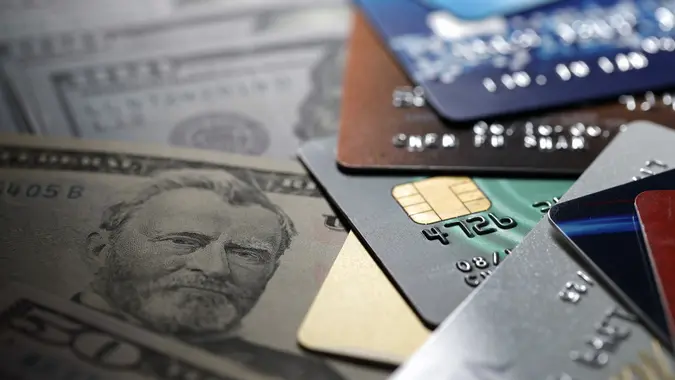Understanding Credit Card Statements
Commitment to Our Readers
GOBankingRates' editorial team is committed to bringing you unbiased reviews and information. We use data-driven methodologies to evaluate financial products and services - our reviews and ratings are not influenced by advertisers. You can read more about our editorial guidelines and our products and services review methodology.

20 Years
Helping You Live Richer

Reviewed
by Experts

Trusted by
Millions of Readers
Having a credit card can help with managing your finances. Emergency car repairs can be covered, anniversary dinners can be enjoyed, and world-wide travel can be paid for all by the swipe of your credit card. However, if you use a credit card, you will be responsible for paying back the loan that you were granted and by thoroughly understanding your credit card statement you can ensure that you hold up to your end of the bargain.
Credit card statements can seem intimidating to a novice, but they are an important tool for insuring the accuracy of your debt. Often by reviewing your credit card statement, you will be able to discover accidentally dual charges, non-approved charges on your account and other types of billing discrepancies. The first thing you should view when looking at your credit card statement is that your name, address and credit card account number all match up to the information you have provided the credit card company.
Aside from that, all credit card statements have some basic information such as:
- Statement Date – Shows all the transactions that occurred from the issuance of the last bill until your statement closed and submitted to you
- Payment Due Date – When your payment must be received by the credit card company
- Minimum Payment Due – The smallest amount you can pay towards your debt
- New Charges – New purchases
- Previous Balance – Old purchases
- Credit Line or Available Credit – The amount of purchasing power you still have in relation to the amount of debt you have already incurred
- Finance Charges – The amount of money you will be charged if you do not pay off the balance in full
- Grace Period – The amount of time you have until your payment is considered late
- A section showing how your current debt was calculated
Aside from the terms of your initial credit card agreement, your credit card statement is your best friend for managing your debts responsibly. For more detailed information on how to understand your credit card statement check out our article on “Locating Items on Your Credit Card Bill.”
 Written by
Written by 























